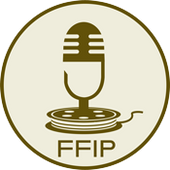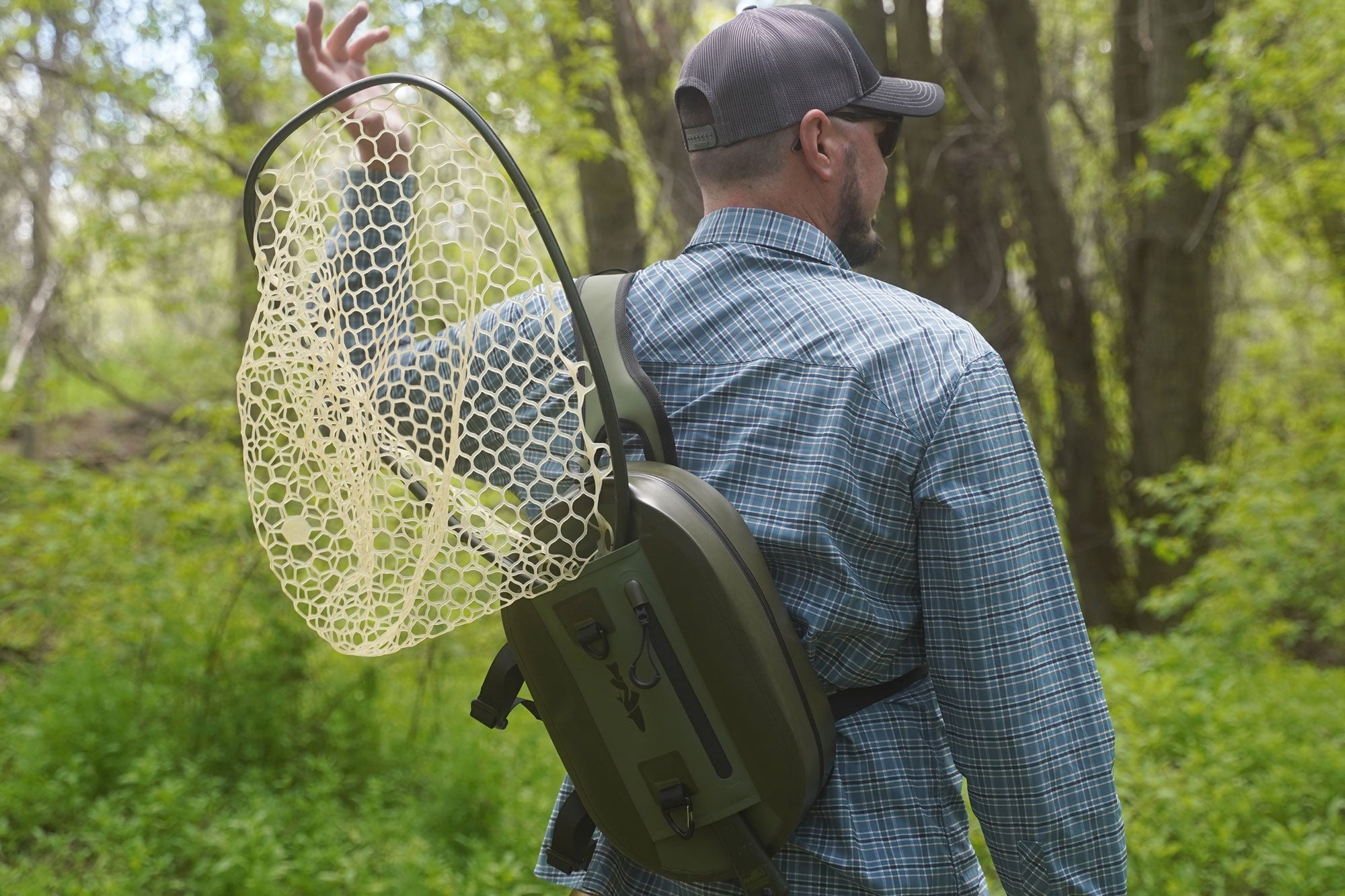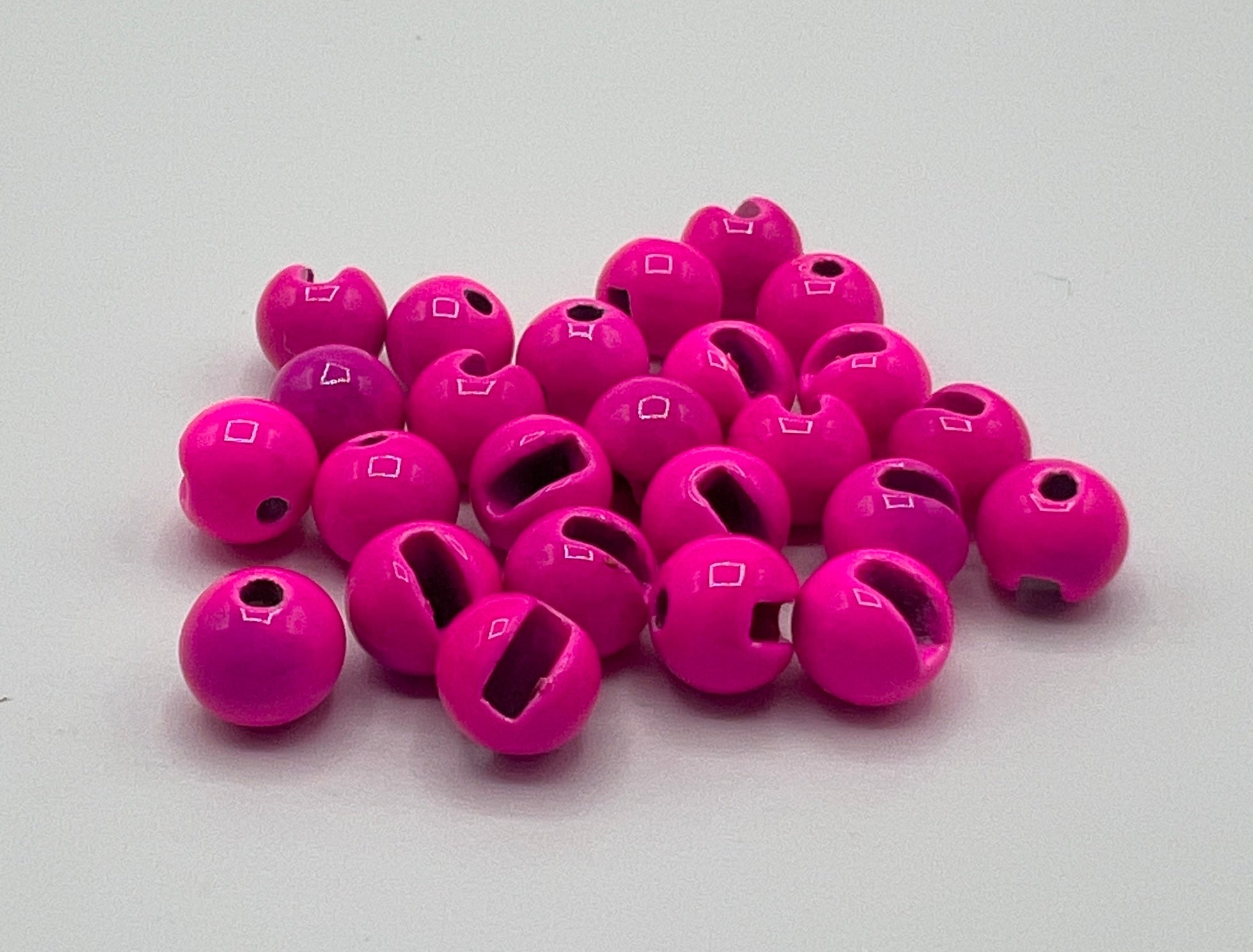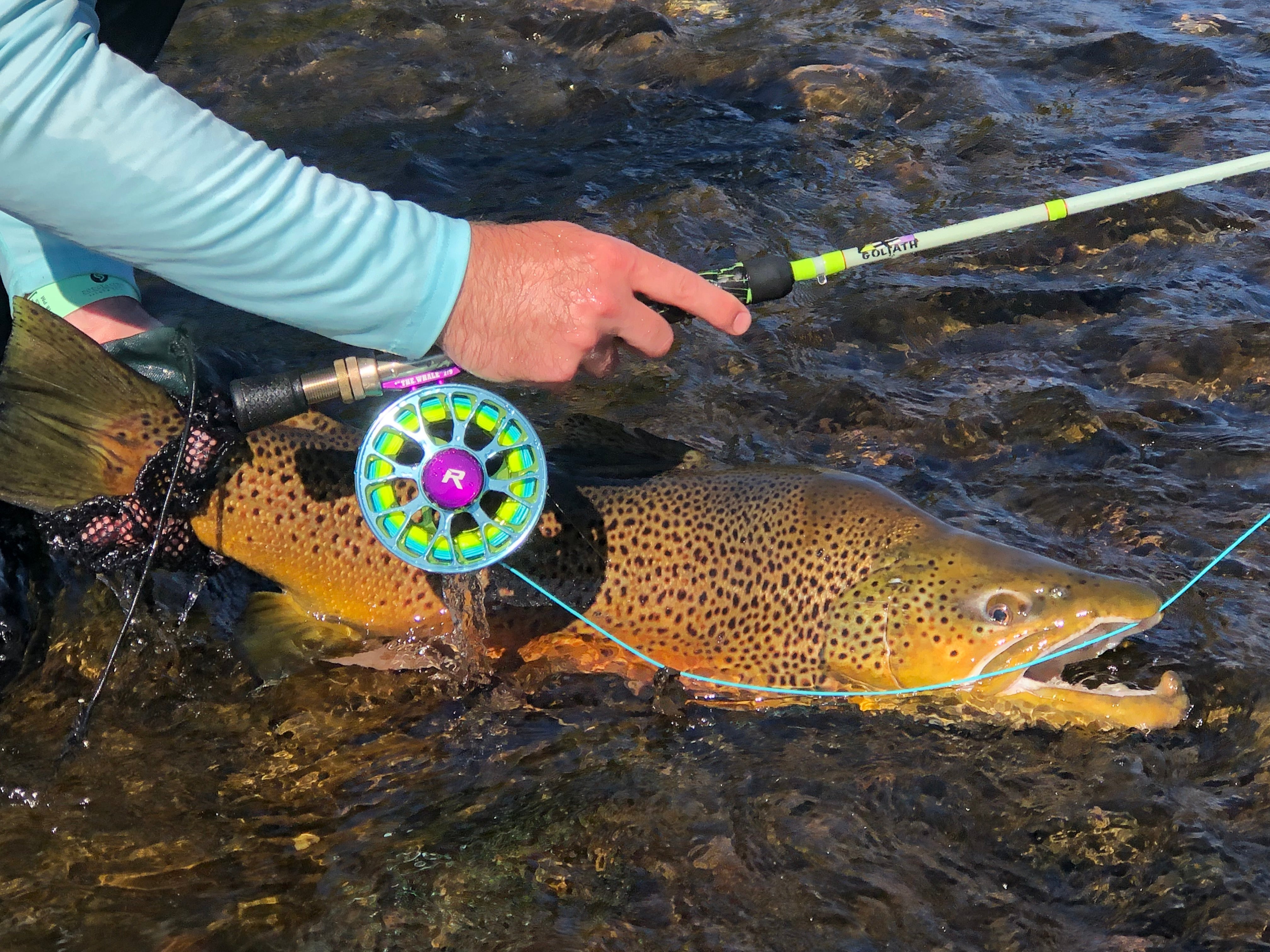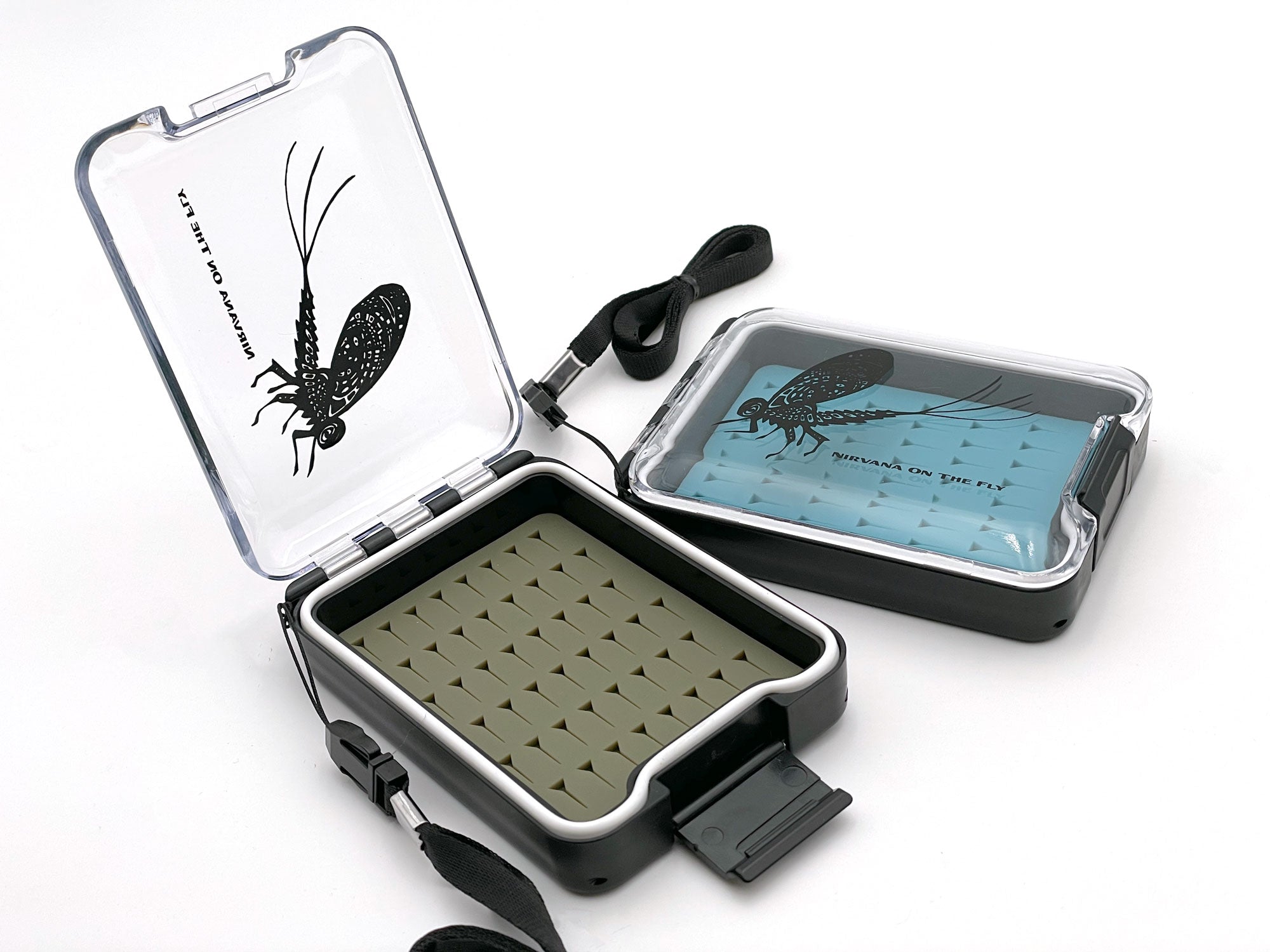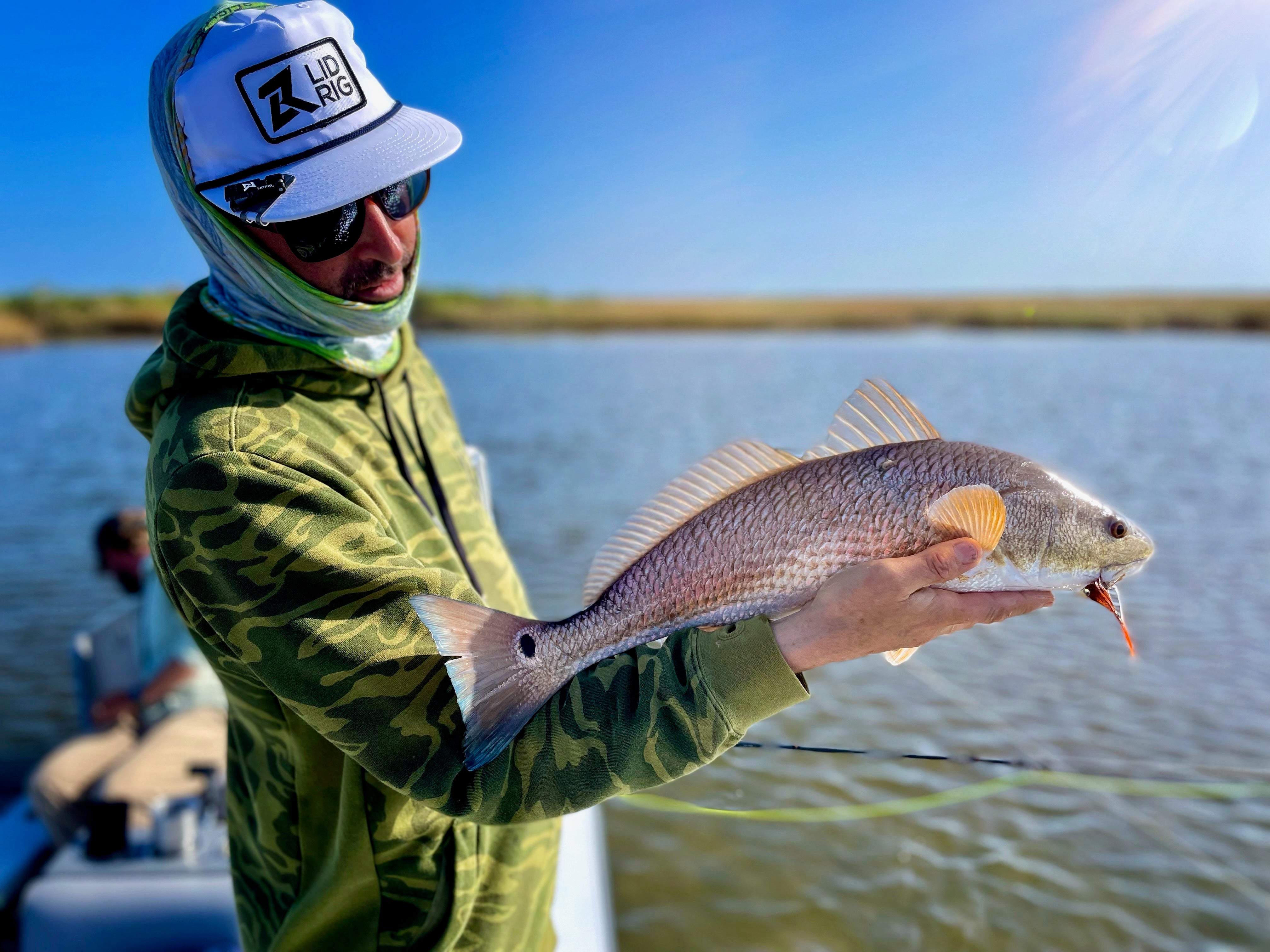1. Learn to Read the Water
Understanding water currents, depths, and structures is crucial. Fish often gather in specific areas, like eddies, seams between currents, or deeper pools. Recognizing these spots can significantly increase your chances of success.
Expanding on the first tactic, "Learn to Read the Water," is essential in developing your fly fishing skills. This tactic involves understanding the dynamics of the water you're fishing in and identifying where fish are likely to be. Here's a more detailed look at what this involves:
Understanding Water Currents
- Flow and Speed: Different fish prefer different flow speeds. Trout, for example, often stay in moderate currents where they can easily feed without expending too much energy. Being able to identify where the substrate, obstacles, etc. are changing eht flow and speed will help you identify easy target areas for fly fishing.
- Eddies and Pools: Areas where the current slows down, like eddies behind large rocks or deep pools, can be ideal spots. Fish often rest in these areas while still having access to food carried by the current. These prime zones also offe an escape from predators. Fish can easily rest and feed in these zones but in a blink of an eye disappear into faster waters or under obsticles when the fear of a preditor arises.
Recognizing Water Structures
- Submerged Objects: Logs, boulders, and other structures create hiding spots and shelter for fish. They can also disrupt the water flow, creating feeding lanes.
- Seams: These are lines in the water where different currents or depths meet. Fish often feed along seams because they concentrate food. Think of them as pinches in the river where things come together and flow multiples. We talk about rivers being like giant conveyor belts of food all the time. Instead think of it as hundreds of small conveyor belts merging and unmerging all the time. A seam is a merge and a pool after a seem is an unmerge and redistribution. Seeing fish are glutenous and lazy they want to set just off the merge and collect with ease. They always want to know food is coming in high volume.
Depth and Bottom Composition
- Depth Variations: Fish may be found at different depths depending on the time of day, weather, and water temperature. Learning to gauge water depth and adjust your technique accordingly is crucial. This is easily identified when you first start. You look for the holes and start fishing. Next is understanding and seeing the depth in riffles like the fifty mile rifle of the Madison River iun Montana.
- Bottom Composition: Sandy, rocky, or weedy bottoms offer different environments for fish. Each type of bottom can affect where fish reside, spawn, and how they behave. The composition also has a significant impact on the aquatic life the river produces and what the fish may feed on.
Water Clarity and Light
- Clarity: Clear water requires a more stealthy approach and finer tackle, while murkier water can forgive some disturbances and allow for heavier gear. Where is it the murkiness coming from? Is it always dirty water or is it due to high water? Is clarity being affected by water flow? Is it slow and clear or fast, oxygenated and ambigous?
- Light and Shadow: Fish are sensitive to light and often use shadows for cover. Anglers should be aware of their shadow and the sun's position to avoid spooking fish. Light can be a double edged sword. With the correct refraction of light on and through the water you can see flies better, fish more clearly but can they do the same. Does the light cast larger, longer shadows for example and spook fish or is the shadow at your back and to your advantage?
Seasonal and Weather Influences
- Seasonal Changes: Different seasons bring changes in water level, temperature, and fish behavior. A great book is Seasons for Trout by Haffel, Hughes, Morris who provide a detailed approach to seasons. Everything from water changes to the seasons affect feeding zones and entomology. Understanding these patterns helps in locating the prime fly fishing locations throughout the year.
- Weather Effects: Rain, snowmelt, and drought can affect water clarity, level, and temperature. Adapting to these changes can be key to successful fishing. For example, trying to fish shallow pools on hot summer days is likely not a great strategy. Instead focus on the deeper water below oxygenated rifles and your luck may turn.
Practice and Observation
- Time on the Water: The more time you spend observing and fishing in different waters, the better you'll understand their unique characteristics. One of my favorite activities is to leave the rod at home and take the dog for a walk on the riverbank for observation. I get to hang and train the dog but I also get a ton of observation at the same time. I’m not focused on the catching but what the fish is doing.
- Learn from Others: Don't hesitate to ask local anglers or guides about the specific water dynamics of the area. They can provide valuable insights based on their experiences. Shops are fantastic for this. They want you to be successful so you come back happy. Instead of asking, “what fly they are hitting?”, ask “where are the fish feeding or sitting?” then ask the key question…”Why?” Understanding the behavior is different then knowing it is occurring.
Additional Tips
- Start with the Edges: Anglers should start by fishing the edges of streams and gradually work their way towards understanding more complex water structures. Way to often do you see anglers rushing in and stepping over trout for tout. The edges can be some of the best angling.
- Use Polarized Sunglasses: These can help you see beneath the surface and better understand the underwater environment. They are likely one of your best tools on the water.
The book Reading Trout Water by Dave Hughes is an excellent read and worth it's weight in gold as an angler in the beginner or advanced phases of fishing. I highly recommend furthering your study by reading this book and observing the hundreds of uniquely illustrated pictures.
2. Perfect Your Casting Technique
Efficient casting is essential in fly fishing. Practice different casting techniques, like roll casting and overhead casting, to handle various situations. Work on accuracy and distance, as well as gentle presentations of the fly.
Expanding on the second tactic, "Perfect Your Casting Technique," is crucial in fly fishing. Casting is not just about getting the fly to the fish; it's about presenting the fly in a natural and effective manner. This involves several key aspects:
Understanding Different Casting Techniques
- Overhead Cast: The most basic and commonly used cast. It requires timing and rhythm to create a loop in the line that propels the fly to the target.
- Roll Cast: Useful when there's limited space behind for a back cast. It involves lifting the line off the water and rolling it forward.
- Side Cast: Effective in windy conditions or under low-hanging trees. It's similar to an overhead cast but performed horizontally.
- Double Haul: A more advanced technique for longer casts, involving a coordinated hand movement to increase line speed.
- Bow and Arrow Cast: Deadly in tight scenarios. Utilizing the kinetic power of a bent rod to fling your fly into tight areas with the skill of a competitive archer.
Practice and Muscle Memory
- Regular Practice: Frequent practice, even away from the water, helps in developing muscle memory and refining your casting technique. The key is to have good practice to develop the correct technique.
- Target Practice: Set up targets at varying distances to work on accuracy. Start close and gradually increase the distance always keeping accuracy and consistency in mind
Line Control and Management
- Managing Slack: Eliminating unnecessary slack in the line improves control and responsiveness, allowing for better accuracy and quicker hook sets. Practice always having the line in your hand leading to constant contact and control.
- Shooting Line: Learning to shoot line during the cast can help achieve greater distance. This involves releasing additional line during the final forward cast. Distance is great but most importantly you will be able to cut the wind with a higher speed cast and remain accurate.
Timing and Rhythm
- Smooth Acceleration: The key to a good cast is a smooth acceleration followed by a sudden stop at the end of both the forward and backward casts. A abrupt acceleration on the last cast is often the failure point. The last and final over acceleration can lead to collapsing your loop and deflating your cast.
- Pause and Loop Formation: Allow time for the line to fully extend behind you before starting the forward cast. This creates the necessary loop for effective casting. The loop controls your lines energy and allows it to unroll in the desired direction.
Adapting to Environmental Conditions
- Wind: Learn to cast with and against the wind. Altering the angle and speed of your cast can help mitigate the effects of wind. A commonly unpracticed method is adjusting your cast direction by utilizing the wind to your desire.
- Obstructions: Practice casting in different scenarios, like under trees or near rocks, to adapt to real-world fishing conditions. Try a Curve cast or an overpowered cast to literally cast around and behind objects.
Equipment Understanding
- Rod Action: Understand the action of your rod (fast, medium, or slow) and how it affects your casting. Then casting with the various types to achieve desired results. Take it to the next level and use a fast action rod for a slow and delicate cast. Controlling the rod is better than the rod controlling you. It may not always lead to the best result but you can feel your technique utilizing the tool in your hand.
- Line Weight and Type: Different line weights and types (floating, sinking) behave differently. Practice with the type you'll use most often but try others. Tapered heads vs. weight forward heads can completely change the way you feel and deliver a cast.
***Here is a detailed article on understanding fly fishing lines
Observation and Learning
- Watch Experts: Observing skilled casters, whether in person or through videos, can provide insights into technique and form. Notice that the most important objective is to get the fly where you need it. The more often your fly is in or on the water the more opportunities you have to catching a lunker.
- Take Lessons: Consider taking casting lessons from a professional instructor, especially when starting out or when trying to correct specific issues. Many of your Trout Unlimited branches have certified casting instructors in them. They likely have a casting class and or someone would be willing to help you improve yours.
Focus on Presentation
- Natural Presentation: The goal is to present the fly in a way that mimics natural prey. This means considering the landing of the fly, the drift, and any necessary movements. I’ve simplified this systematizing you presentation plan. You can read about it here in depth.
Fine-Tuning and Experimentation
- Experiment with Styles: Don’t be afraid to try different styles and techniques to see what works best for you and in different fishing situations. Once you achieve good casting try taking a spey lesson. Learning how to position the line and anchor points so they manipulate and leverage the rod can be an invaluable lesson, even in single hand rod use.
Patience and Persistence
- Continuous Improvement: Casting is an art that can always be refined. Stay patient, and don’t get discouraged by initial difficulties. Again, think location, location, location. Get your fly in the location you need and all the other stuff is anecdotal.
Starting with studying and mastering these two strategies will improve your fly fishing significantly. Focusing on reading water and perfecting your cast is going to build a foundation that so many other techniques and tactics can build on and thrive. Your ability to master these two essentials will accelerate your learning in so many other aspects it is incomparable.
Like this then read Part 2.
Wet nets!
CB
Download the Fly Fishing for Beginners eBook

By Christian Bacasa
Host of the Fly Fishing Insider Podcast
www.ffipodcast.com
@flyfishinginsiderpodcast
@dupeafish
